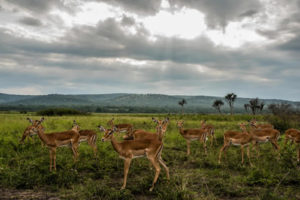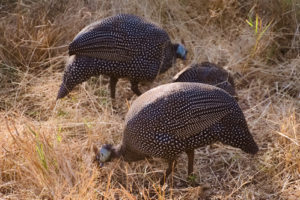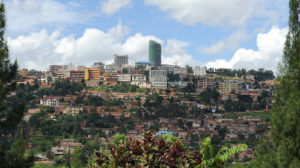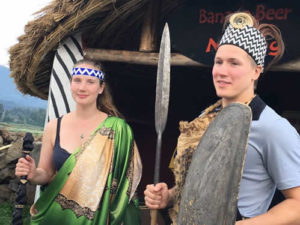Are you looking for information about the National Parks in Rwanda? Well read on. Rwanda is a small landlocked county found in Central/East Africa. Often referred to as a “Land of a thousand hills”, Rwanda is blessed with some of the most amazing landscapes on earth. She is a country with numerous water bodies, Savannah plains, mountain and rare creatures like mountain gorillas. In 1994, the country had to endure one of the worst genocides in recent history in which about one million Tutsis were killed by the majority Hutu in a period of only three months.
Since then, the country has recovered admirably by uniting the people and working hard to create a peaceful atmosphere for development. Rwanda has one of the lowest levels of corruption in Africa. Women are highly empowered and occupy most of the sits in parliament. All this has been a result of the tireless effort of President Paul Kagame and his government. More recently the country has prioritized the restoration of the country’s wildlife, national parks and natural vegetation while also promoting her as a leading tourism destination in Africa.
 Rwanda has four national parks. They are all protected wildlife reserves and ecosystems and include the Akagera National Park, Nyungwe National Park, Gishwati-Mukura National Park and the Volcanoes National Park. Gishwati-Mukura was created in 2015 and is hence the youngest national park created. The Rwanda Development Board (RDB) is responsible for the overall management of all the national parks, related infrastructure and promoting tourism. The RDB is assisted by other government agencies and ministries. In some cases, like that of the Akagera and Gishwati-Mukura National Park, the government entered into long term agreements with private partners to help run some park activities.
Rwanda has four national parks. They are all protected wildlife reserves and ecosystems and include the Akagera National Park, Nyungwe National Park, Gishwati-Mukura National Park and the Volcanoes National Park. Gishwati-Mukura was created in 2015 and is hence the youngest national park created. The Rwanda Development Board (RDB) is responsible for the overall management of all the national parks, related infrastructure and promoting tourism. The RDB is assisted by other government agencies and ministries. In some cases, like that of the Akagera and Gishwati-Mukura National Park, the government entered into long term agreements with private partners to help run some park activities.
Rwanda’s national parks all offer something different in terms of wildlife or ecosystem. The volcanoes national park for examples has mountain gorillas while Akagera is the only park where all the big five mammals can be sighted. Nyungwe forest has the oldest and most pristine montane forest in Africa and is arguably the best for chimpanzee trekking in Rwanda. What does Gishwati-Mukura offer? Apart from having its own chimpanzee population, Gishwati is being positioned to become the best eco-tourism site and the best birding destination in Rwanda. Before we discuss the different national parks in detail, you might also want to read about the top things to so in Rwanda.
Game Parks in Rwanda
Volcanoes National Park
The Volcanoes National Park is found in the northwestern part of the country. It borders National Parks in Uganda and Virunga National park in Congo. The park covers an area of 160 square kilometers and was established in 1925 to protect the mountain gorillas. The volcanoes national park sits on a higher altitude and is generally colder compared to Rwanda’s other national parks. It consists of 5 volcanoes/mountains (Karisimbi, Bisoke, Muhabura, Sabinyo and Gahinga), bamboo forests, rainforests, a few lakes, marshes and the musanze caves. The Volcanoes national Park has the second highest population of mountain gorillas after Uganda’s Bwindi Impenetrable forest. The park is also home to golden monkeys and mammals like forest elephants, spotted hyenas, bushbucks, buffaloes, smaller primates and 178 species of birds.
Despite the rich biodiversity, what really makes the volcanoes national park stand out are the mountain gorillas. Dian Fossey made the park known internationally because of her research studies with the gorillas from 1967 until her death in 1985. She built the Karisoke Research Centre and helped curb  poaching in the park. Unfortunately, the civil war and genocide in the early 1990’s saw a return of massive poaching and encroachments on park land. The government later took serious steps to eliminate poaching and militias in the park such that there are virtually no threats to visitors. Tourists visiting the volcanoes national park can take part in several activities including gorilla tracking, visiting the musanze caves, golden monkey trekking and hiking one of the 5 volcanoes. Hiking mountain Karisimbi is arguably the most popular with Bisoke hiking coming second. Hiking Mount Sabinyo, Muhabura and Gahinga is best done from the Uganda side. For more about the Volcanoes national park here.
poaching in the park. Unfortunately, the civil war and genocide in the early 1990’s saw a return of massive poaching and encroachments on park land. The government later took serious steps to eliminate poaching and militias in the park such that there are virtually no threats to visitors. Tourists visiting the volcanoes national park can take part in several activities including gorilla tracking, visiting the musanze caves, golden monkey trekking and hiking one of the 5 volcanoes. Hiking mountain Karisimbi is arguably the most popular with Bisoke hiking coming second. Hiking Mount Sabinyo, Muhabura and Gahinga is best done from the Uganda side. For more about the Volcanoes national park here.
Nyungwe Forest National Park
Nyungwe Forest National Park is found near Rwanda’s border with the Democratic Republic of Congo and Burundi. The park was established in the Southwestern part of the country in 2004. It is one of the two newest national parks in the county and covers an area of 270 square Kilometers. Nyungwe forest  the largest and oldest montane forest in Africa, dating back to the time of the last Ice Age. The forest remains green throughout hence offering amazing scenery to those who visit. Nungwe forest is dominated by a group of mountains whose formations are related to those in Congo and Uganda. From these mountains one can have great views of Lake Kivu and the Virunga Volcanoes during certain times of the day. Nyungwe Forest National park is home to more than 200 species of trees including bogs, bamboo and grasslands. Nyungwe has been described by some as Rwanda’s primate capital with over 13 species including the Angola Colobus, Silver monkeys, L’Hoest’s Monkeys, Dent’s Mona Monkeys, Baboons, Vervet Monkeys, Golden Monkeys, Red-tailed monkeys, Hamlyn’s Monkeys, Grey-cheeked Managabeys, chimpanzees, black and white colobus.
the largest and oldest montane forest in Africa, dating back to the time of the last Ice Age. The forest remains green throughout hence offering amazing scenery to those who visit. Nungwe forest is dominated by a group of mountains whose formations are related to those in Congo and Uganda. From these mountains one can have great views of Lake Kivu and the Virunga Volcanoes during certain times of the day. Nyungwe Forest National park is home to more than 200 species of trees including bogs, bamboo and grasslands. Nyungwe has been described by some as Rwanda’s primate capital with over 13 species including the Angola Colobus, Silver monkeys, L’Hoest’s Monkeys, Dent’s Mona Monkeys, Baboons, Vervet Monkeys, Golden Monkeys, Red-tailed monkeys, Hamlyn’s Monkeys, Grey-cheeked Managabeys, chimpanzees, black and white colobus.
Nyungwe forest is one of the top birding destinations in Rwanda with 275 species recorded. The dense forest is also home to 85 species of mammal, 120 of butterflies, 38 of reptiles and 32 of amphibians.  Golden cats, Leopards, serval cats, Mongooses, civets and stripped jackals all call this park home. Nyungwe forest has an elaborate network of well-built canopy walks which allow tourists marvel at the forest and its creatures from a bird’s view. The Congo Nile trail passes through this forest enabling bikers to observe forest, birds, primates, waterfalls, wildlife or even go for the popular canopy walk. Apart from the Congo Nile trail route, the forest has over 20 kilometers of well-maintained ground trails for nature walks and a chance to encounter the forest creatures, waterfalls, marshlands and rain-forest. Read more about Nyungwe National Park here. If you are planning to visit the park in the near future, check out our 3 days Nyungwe Chimpanzee safari package.
Golden cats, Leopards, serval cats, Mongooses, civets and stripped jackals all call this park home. Nyungwe forest has an elaborate network of well-built canopy walks which allow tourists marvel at the forest and its creatures from a bird’s view. The Congo Nile trail passes through this forest enabling bikers to observe forest, birds, primates, waterfalls, wildlife or even go for the popular canopy walk. Apart from the Congo Nile trail route, the forest has over 20 kilometers of well-maintained ground trails for nature walks and a chance to encounter the forest creatures, waterfalls, marshlands and rain-forest. Read more about Nyungwe National Park here. If you are planning to visit the park in the near future, check out our 3 days Nyungwe Chimpanzee safari package.
Akagera National Park
Akagera National Park is the largest and only Savannah park in Rwanda. It was established near the border with Tanzania in 1934 as the second national park in Rwanda. The park covers an area of 1,222  square kilometers and consists of Savannah, woodlands, montane forests and vast swamps. Akagera is blessed with water bodies but the most prominent are river Kagera, Lake Shakani and lake Ihema. Akagera national park lost most of its animal population after the Rwanda genocide in 1994. Thousands of former refugees stormed the park and opened up farms while at the same time poisoning all the 300 hundred lions in the park then. Animal loss did not begin in 1994 though. Akagera once had one of the highest population of wild dogs in East Africa The colonial authorities found them a nuisance and killed most of them.
square kilometers and consists of Savannah, woodlands, montane forests and vast swamps. Akagera is blessed with water bodies but the most prominent are river Kagera, Lake Shakani and lake Ihema. Akagera national park lost most of its animal population after the Rwanda genocide in 1994. Thousands of former refugees stormed the park and opened up farms while at the same time poisoning all the 300 hundred lions in the park then. Animal loss did not begin in 1994 though. Akagera once had one of the highest population of wild dogs in East Africa The colonial authorities found them a nuisance and killed most of them.
 The new government in Rwanda after the genocide realized the huge potential of tourism. Since then the government has done everything possible to recover what was lost and promote tourism in the park. At the moment all the big five animals (Leopards, Elephants, Rhinos, Lions and Buffaloes) are once again roaming the park freely. Apart from the big five mammals, tourists can also spot zebra impala, oribi, bushbucks, eland, tsessebe, hippopotamus and crocodiles. Akagera National Park is one of the best places for birding in Rwanda. It has a great concentration of water birds which thrive on the park’s vast marshes and wetlands. 425 species of birds have been recorded including the shoebill stork and the papyrus gonolek.
The new government in Rwanda after the genocide realized the huge potential of tourism. Since then the government has done everything possible to recover what was lost and promote tourism in the park. At the moment all the big five animals (Leopards, Elephants, Rhinos, Lions and Buffaloes) are once again roaming the park freely. Apart from the big five mammals, tourists can also spot zebra impala, oribi, bushbucks, eland, tsessebe, hippopotamus and crocodiles. Akagera National Park is one of the best places for birding in Rwanda. It has a great concentration of water birds which thrive on the park’s vast marshes and wetlands. 425 species of birds have been recorded including the shoebill stork and the papyrus gonolek.
 The success of tourism in the country has motivated the government and partners to fence off the entire park and build the necessary infrastructure required to support increasing visitors. For better service delivery, the government entered into a partnership with the Akagera Management Company (AMC) and the African Parks Network (APN) to manage the park while also helping raise funds for conservation and infrastructure developments. Although most tourists are still distracted by the mountain gorillas at the Volcanoes national park, Akagera is gradually building a reputation as a leading destination for those interested in a true African safari. Read more here or check out our 2 days Akagera National Park wildlife safari package. There is an interesting article about the cost of a safari in Akagera National Park.
The success of tourism in the country has motivated the government and partners to fence off the entire park and build the necessary infrastructure required to support increasing visitors. For better service delivery, the government entered into a partnership with the Akagera Management Company (AMC) and the African Parks Network (APN) to manage the park while also helping raise funds for conservation and infrastructure developments. Although most tourists are still distracted by the mountain gorillas at the Volcanoes national park, Akagera is gradually building a reputation as a leading destination for those interested in a true African safari. Read more here or check out our 2 days Akagera National Park wildlife safari package. There is an interesting article about the cost of a safari in Akagera National Park.
Gishwati-Mukura National Park
Gishwati-Mukura national park is Rwanda’s newest national park. It was created in 2015 by combining the Gishwati and Mukura forests. The park was established to help preserve what was remaining of the  Mukura and Gishwati forests while also protecting the chimpanzee populations therein. The park is also home to golden monkeys, blue monkeys and L’Hoest’s monkeys. Before the creation of the park, the two forests almost faced extinction as a result of human encroachment after the genocide in 1994. Refugees came back and cleared a large part of the forests to build homes and for subsistence farming. The forest corridor that connected the two forest to Nyungwe National Park disappeared leaving the chimpanzee population and other wildlife isolated. Over 60% of the forests wildlife species were lost by the time the national park was formed.
Mukura and Gishwati forests while also protecting the chimpanzee populations therein. The park is also home to golden monkeys, blue monkeys and L’Hoest’s monkeys. Before the creation of the park, the two forests almost faced extinction as a result of human encroachment after the genocide in 1994. Refugees came back and cleared a large part of the forests to build homes and for subsistence farming. The forest corridor that connected the two forest to Nyungwe National Park disappeared leaving the chimpanzee population and other wildlife isolated. Over 60% of the forests wildlife species were lost by the time the national park was formed.
The government entered into a partnership with the Wilderness safari to restore what was lost, stop encroachment, sensitize the communities about the benefit of the park and turn it into a high-end eco- tourism site. The government is working with Wilderness safaris to introduce chimpanzee trekking, primates viewing and birdwatching. The story of Gishwati-Mukura is another example of how serious the government is about wildlife conservation. The government has partnered with international organizations like the World bank to plant trees in previously degraded areas. The forest corridors have been rebuilt to connect the two forests to each other and to the Nyungwe forest. If you want to visit somewhere different, then you should visit Gishwati-Mukura National Park. You will be able to track chimps, go birding, visit the local population and take part in a groundbreaking eco-tourism project. Read here for more about Gishwati-Mukura National Park.
tourism site. The government is working with Wilderness safaris to introduce chimpanzee trekking, primates viewing and birdwatching. The story of Gishwati-Mukura is another example of how serious the government is about wildlife conservation. The government has partnered with international organizations like the World bank to plant trees in previously degraded areas. The forest corridors have been rebuilt to connect the two forests to each other and to the Nyungwe forest. If you want to visit somewhere different, then you should visit Gishwati-Mukura National Park. You will be able to track chimps, go birding, visit the local population and take part in a groundbreaking eco-tourism project. Read here for more about Gishwati-Mukura National Park.
Other Attractions other than game Parks
Kigali
Kigali is Rwanda’s capital city and home to over 1 million people. It was established in 1907 during the German colonial rule but only became a capital at the time of Rwanda’s independence in 1962. Kigali has  grown to become recognized as one of the three cleanest and safest capitals in Africa. Despite its current charm, the city was being the great genocide started. While visiting Kigali, you can visit the Kigali Genocide memorial to lean about what really happened during this dark chapter in Rwanda’s history. You can also visit Hôtel des Mille Collines where about 1,000 people took refuge. Our comprehensive article about visiting Kigali and its tourist attractions is very informative if you are planning to visit in the future.
grown to become recognized as one of the three cleanest and safest capitals in Africa. Despite its current charm, the city was being the great genocide started. While visiting Kigali, you can visit the Kigali Genocide memorial to lean about what really happened during this dark chapter in Rwanda’s history. You can also visit Hôtel des Mille Collines where about 1,000 people took refuge. Our comprehensive article about visiting Kigali and its tourist attractions is very informative if you are planning to visit in the future.
Lake Kivu
Lake Kivu is one of Africa’s great lakes. It is found in both the DR Congo and Rwanda. Lake Kivu is fed by countless rivers and streams before releasing its waters into two of the world’s greatest rivers – the  Congo and Nile. Lake Kivu is not only known for its beautiful islands (like Idjwi) but also for also containing large amounts of dissolved methane in its depths. Scientists believe that if something catastrophic happened like a massive earthquake, large amounts of the gas (carbon dioxide) would be released into the atmosphere causing a tsunami and suffocating most living things around the lake. There are only three lakes with such a phenomenon. An eruption was recorded in Lake Nyos of Cameroon suffocating many people and animals. Lake Kivu is very close to the active Nyiragongo volcano which is prone to earth movements.
Congo and Nile. Lake Kivu is not only known for its beautiful islands (like Idjwi) but also for also containing large amounts of dissolved methane in its depths. Scientists believe that if something catastrophic happened like a massive earthquake, large amounts of the gas (carbon dioxide) would be released into the atmosphere causing a tsunami and suffocating most living things around the lake. There are only three lakes with such a phenomenon. An eruption was recorded in Lake Nyos of Cameroon suffocating many people and animals. Lake Kivu is very close to the active Nyiragongo volcano which is prone to earth movements.
 As of now there is nothing to fear about visiting Lake Kivu. The chances of the Lake exploding are slim. In fact, the government of Rwanda is already studying ways of extracting the methane gas for industrial and other uses. The methane gas should not scare anyone from exploring this amazing lake. Lake Kivu is perfect for relaxation and recuperation after a long safari in Rwanda. It’s beautiful beaches/scenery and tropical weather are also suitable for relaxation while on a weekend in Rwanda. You can go swimming, sunbathing, kayaking, canoeing, wind surfing, island hopping, fishing and boat riding.
As of now there is nothing to fear about visiting Lake Kivu. The chances of the Lake exploding are slim. In fact, the government of Rwanda is already studying ways of extracting the methane gas for industrial and other uses. The methane gas should not scare anyone from exploring this amazing lake. Lake Kivu is perfect for relaxation and recuperation after a long safari in Rwanda. It’s beautiful beaches/scenery and tropical weather are also suitable for relaxation while on a weekend in Rwanda. You can go swimming, sunbathing, kayaking, canoeing, wind surfing, island hopping, fishing and boat riding.
Museums, Iby’iwacu Cultural Centre and the Genocide memorials
There are 6 major museums and other cultural sites in Rwanda. The national museum of Rwanda in Huye district is arguably the best one to visit. It showcases all there is to know about Rwanda, her history  though artifacts, videos, photos and much more. If you want to learn more about the Rwanda genocide after visiting the Genocide Centre in Kigali, you can travel to the other museums located in different corners of the country for more information and a deeper understanding of the tragic event. All the genocide memorial centers exhibit remains, personal clothing, photographs and videos of what happened in 1994. The country is open about the genocide in order to heal and ensure that such a tragedy never happens again.
though artifacts, videos, photos and much more. If you want to learn more about the Rwanda genocide after visiting the Genocide Centre in Kigali, you can travel to the other museums located in different corners of the country for more information and a deeper understanding of the tragic event. All the genocide memorial centers exhibit remains, personal clothing, photographs and videos of what happened in 1994. The country is open about the genocide in order to heal and ensure that such a tragedy never happens again.
 If you want to discover Rwanda and her culture, there is no better place to go to than the Iby’iwacu Cultural Village. The village is built close to the Volcanoes national park and is a favorite for this who have completed gorilla trekking in Rwanda. The Centre started as one of the methods of eliminating poaching in the park by offering former poachers an opportunity to earn a living from tourism. Over the years, it has become the most popular Centre for all that there is to learn about Rwanda’s cultural heritage. Go expecting to be entertained with performances and a chance to buy local souvenir to take home after your Rwanda safari. You can also read our article about tourist attractions in Uganda.
If you want to discover Rwanda and her culture, there is no better place to go to than the Iby’iwacu Cultural Village. The village is built close to the Volcanoes national park and is a favorite for this who have completed gorilla trekking in Rwanda. The Centre started as one of the methods of eliminating poaching in the park by offering former poachers an opportunity to earn a living from tourism. Over the years, it has become the most popular Centre for all that there is to learn about Rwanda’s cultural heritage. Go expecting to be entertained with performances and a chance to buy local souvenir to take home after your Rwanda safari. You can also read our article about tourist attractions in Uganda.

